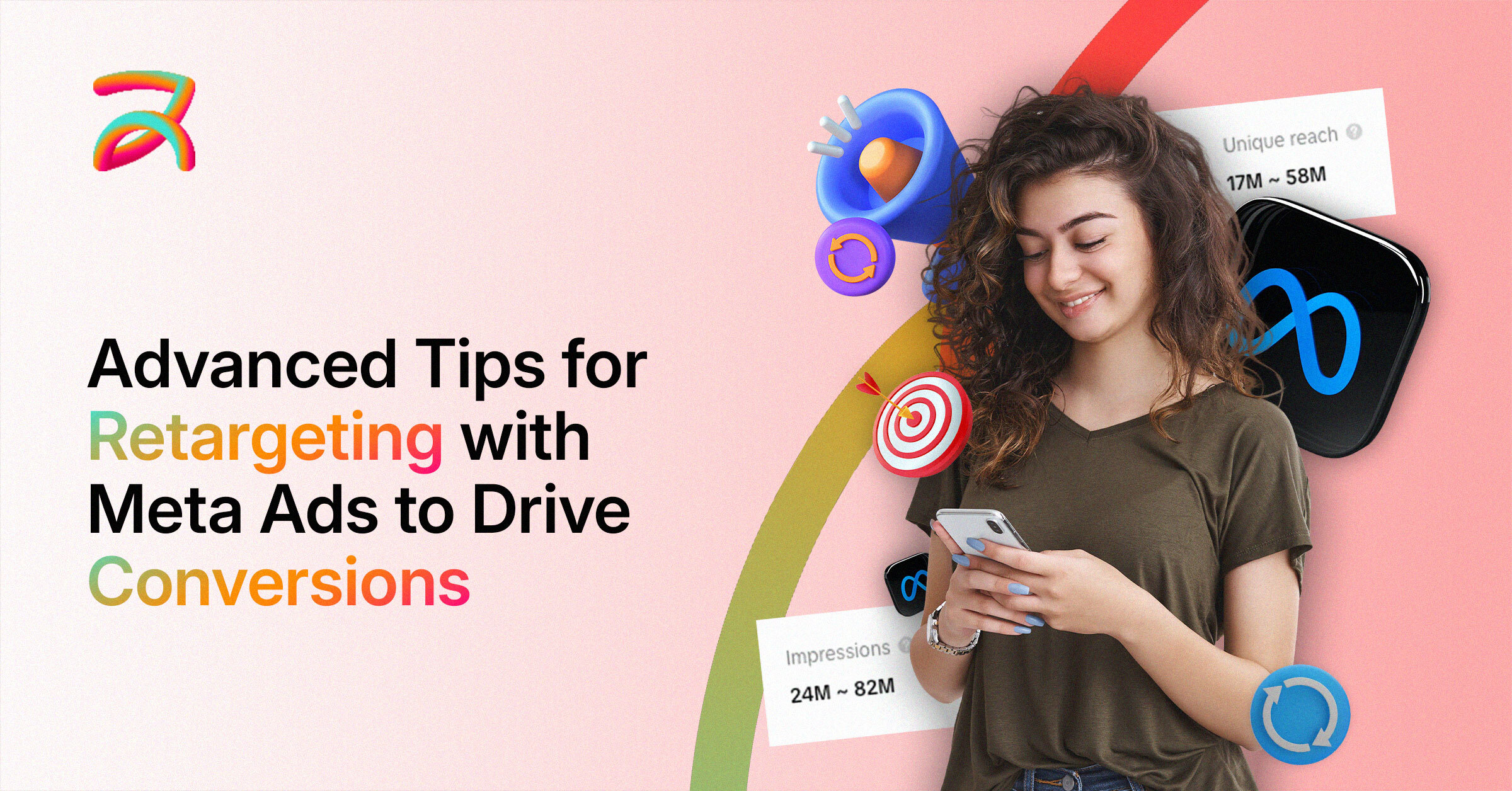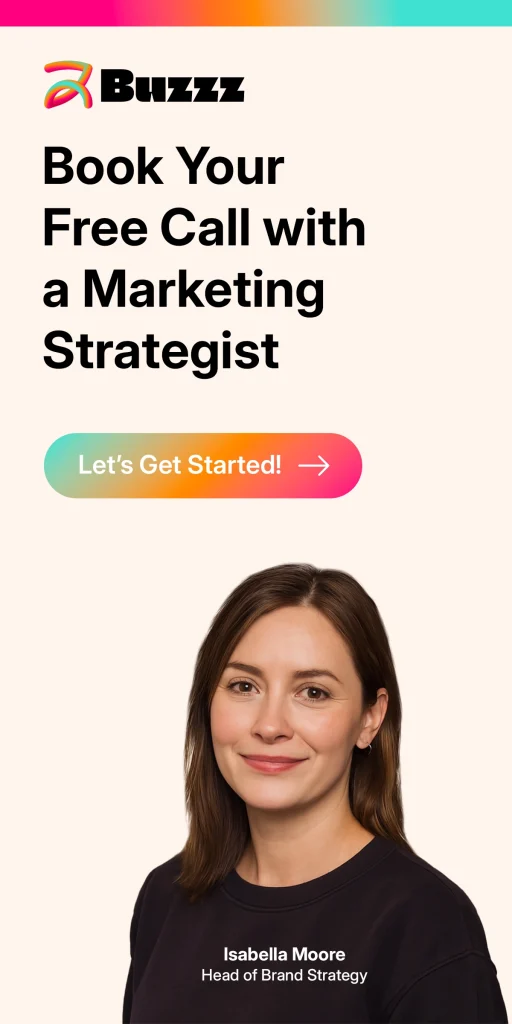Ever feel like you’re throwing money at Meta ads without seeing any results? You are not alone.
Most businesses struggle to turn clicks into actual sales. But here’s the thing that the people who have already visited your website are 70% more likely to convert than cold audiences.
That’s where smart retargeting comes in. Instead of chasing new people who might not care, you can focus on warm leads who have already shown interest.
Do you want to turn those window shoppers into paying customers? Let’s dive into the advanced strategies that actually work.
Why Retargeting with Meta Ads is Crucial for Driving Conversions
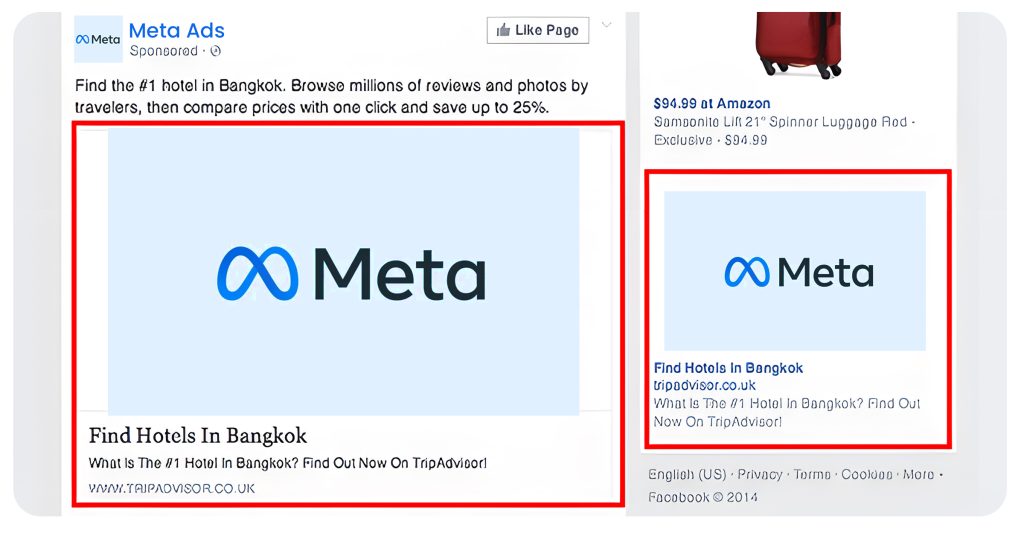
Retargeting with Meta Ads is a powerful tool for businesses that want to boost their conversions.
If you have ever browsed a website and seen ads for the same products you viewed earlier, that’s retargeting in action.
But why is it so crucial, especially for businesses that want to increase their conversion rates?
Introduction to Retargeting with Meta Ads
Retargeting with Meta Ads means showing your ads to people who already know your brand. It’s like someone visits your website, looks at your products, and then leaves without buying anything.
Retargeting lets you follow up with that person on Facebook or Instagram. You can remind them about the product they viewed or show them special offers.
This works because these people have already shown interest in what you sell. They just need a gentle push to come back and make a purchase.
What is retargeting with Meta Ads?
Meta Ads retargeting tracks people who interact with your business online. When someone visits your website, clicks your ad, or engages with your social media, Meta remembers them.
Then you can create special ads just for these warm leads. It’s like having a conversation with someone who already knows you instead of introducing yourself to a stranger.
The best part? You can customize your message based on what they did on your site. If they looked at shoes, show them shoe ads.
Why is it essential for businesses aiming to increase conversions?
Most people don’t buy on their first visit to your website. Studies show it takes multiple touchpoints before someone makes a purchase decision.
Here are the two main advantages retargeting offers.
- Retargeting helps you stay in front of potential customers without being pushy.
- You can nurture them through their buying journey with relevant content and offers.
This approach costs less than finding new customers and brings better results. When you focus on people who have already shown interest, you spend your ad budget more wisely and see higher conversion rates.
Importance of Retargeting for Conversion Funnel Optimization
Retargeting helps you optimize your conversion funnel by nurturing leads at various stages. Each of these stages can be targeted with specific ads to guide users through the funnel and ultimately convert them into paying customers.
The conversion funnel is generally broken into three stages:
| Stage | Goal | Ad Example |
| Top-of-Funnel (TOFU) | Build brand awareness | Introductory videos or product highlights |
| Middle-of-Funnel (MOFU) | Engage users by considering your product | Customer reviews, feature highlights |
| Bottom-of-Funnel (BOFU) | Drive conversions with urgency or discounts | Discount codes, limited-time offers |
How Meta Ads Enhance Retargeting Strategies
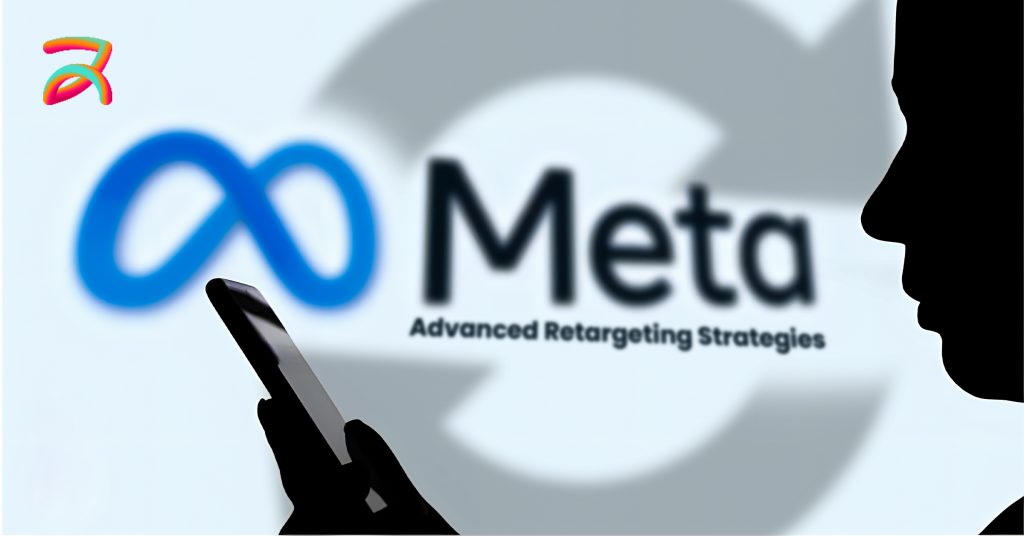
Meta Pixel is the secret weapon that makes retargeting possible. This small piece of code sits on your website and tracks what visitors do.
It sees which pages they visit, what products they view, and how long they stay. Then Meta uses this information to create your retargeting audiences.
You can build lists of people who visited specific pages, spent certain amounts of time on your site, or took particular actions. This data helps you create laser-focused ad campaigns that speak directly to each person’s interests.
Benefits of Retargeting on Facebook & Instagram
Retargeting on Meta’s platforms gives you several powerful advantages:
- Higher ROI: You spend money on people more likely to buy
- Refined targeting: You reach the right people at the right time
- Better ad relevance: Your ads match what people already want
- Improved effectiveness: Your campaigns perform better overall
Plus, Facebook and Instagram users spend lots of time on these platforms. Your retargeting ads appear where your audience already hangs out. This natural placement feels less intrusive and gets better engagement than ads on other platforms.
Advanced Retargeting Strategies to Drive Conversions
Most people think retargeting means showing the same ad to everyone who visited their website.
Wrong! That’s amateur hour stuff. The businesses making real money use smart strategies that target different people in different ways.
They know exactly when to show which ads and how to make people actually buy. These eight strategies will teach you how to stop wasting money on basic retargeting and start seeing real results.
📞 Ready to Scale Your Meta Ads? Let Buzzz Lead the Way!
Want to boost your Meta Ads performance? Connect with Buzzz to get a customized strategy designed for maximum ROI. Let’s make your ads work smarter, not harder.
Get Started with Buzzz →1# Dynamic Retargeting for Personalized Ads
Dynamic retargeting shows people the exact products they looked at on your website. Instead of generic ads, each person sees items they viewed or added to their cart.
This personal touch works because people have already shown interest in those specific products.
Meta pulls this information from your product feed automatically, so you don’t need to create hundreds of different ads manually.
How Dynamic Ads Work
When someone visits your site and checks out products, Meta remembers what they looked at.
Your ads then show those exact items with current prices and availability. If they abandon their cart, the ad displays those products with a special offer.
Creating Personalized Retargeting Ads
Meta Pixel tracks what people do on your site and creates personalized ad experiences. Someone who looks at running shoes sees ads for those shoes, plus matching gear.
This makes your ads feel like helpful recommendations instead of random promotions.
2# Using Custom Audiences for More Precise Retargeting
Custom audiences let you group website visitors based on their specific actions. You can create different audience lists for people who viewed certain pages, downloaded files, or started checkout.
This precision helps you send the right message to each group instead of showing everyone the same generic ad.
What Are Custom Audiences in Meta Ads?
Custom audiences sort your visitors into groups based on what they did on your site. One group contains homepage browsers, another has product viewers, and the most valuable group includes people who started buying but didn’t finish.
Targeting Specific Actions
You can target people based on almost any website action. Contact form visitors get ads with your phone number.
Video watchers see product demos. This specific targeting makes your ads more relevant to each person’s interests.
3# Lookalike Audiences to Expand Reach with Similar Users
Lookalike audiences help you find new customers who act like your best existing customers. Meta analyzes your current buyers and finds other Facebook users with similar behaviors and interests.
This targeting method works better than guessing who might want your products because it’s based on proven customer data.
Expanding Your Audience with Lookalike Audiences
Give Meta a list of your best customers, and it finds thousands of similar people who don’t know about your business yet.
These audiences work because similar people tend to make similar buying decisions.
Why Lookalike Audiences Are Effective
Instead of throwing ads at random people, you target folks with the same characteristics as your proven buyers.
If your customers are working moms who shop online at night, Meta finds more working moms with identical habits.
4# Multi-Step Funnel Retargeting to Nurture Leads
Multi-step retargeting guides people through your sales process using different ads at each stage.
First-time visitors see educational content, engaged users see product features, and interested prospects get testimonials and offers. Each ad builds on the previous one, warming up leads until they’re ready to buy.
What Is a Multi-Step Retargeting Funnel?
A retargeting funnel shows different ads based on how people interact with your brand. New visitors get introductory content, while product viewers see detailed benefits.
Cart abandoners receive special offers and customer reviews.
Nurturing Leads with Step-by-Step Ads
Your funnel moves people through three stages: awareness (TOFU), consideration (MOFU), and decision (BOFU).
Each person sees the right message at the right time based on their previous actions with your ads.
5# Combining Retargeting with Upselling and Cross-Selling
After someone buys from you, retargeting ads can increase their spending through smart product recommendations.
Camera buyers see ads for accessories, while basic service customers get premium upgrade offers. This strategy works because existing customers already trust your brand and know your products deliver results.
Upselling and Cross-Selling Using Retargeting Ads
Show related products that complement previous purchases. Running shoe buyers get workout gear ads, while skincare customers see makeup recommendations.
This feels helpful rather than pushy because you’re suggesting logical next steps.
Boosting Sales with Complementary Offers
Cross-selling promotes products that work well together, while upselling showcases premium versions of what they bought. Basic subscribers see advanced features they’re missing, creating natural upgrade opportunities.
6# Video Retargeting for Higher Engagement
Video ads grab more attention than static images, especially for people who already know your brand.
You can create specific videos for different audience segments, like pricing page visitors get benefit explanations, while cart abandoners see customer success stories. Videos make your retargeting feel more personal and engaging.
Using Video for Engaging Retargeting Ads
People who know your brand are more likely to watch your videos because they’re curious about updates.
Create targeted videos for different segments based on their website behavior and interests.
Types of Video Content for Retargeting
Customer testimonials build trust for people considering purchases. Product demos show exactly how your solution works. Behind-the-scenes content makes your brand feel personal and trustworthy.
7# Time-Based Retargeting to Capitalize on Urgency
Time-based retargeting uses scarcity and deadlines to motivate immediate action. Cart abandoners see countdown timers for their discount codes, while browsers get limited-time sale notifications.
The key is making urgency real and honest because fake deadlines damage your credibility and hurt long-term trust with customers.
Creating Urgency with Time-Based Retargeting
Use countdown timers, limited inventory messages, and flash sales to create fear of missing out.
People who’ve been browsing for weeks without buying respond well to time-sensitive offers that push them toward a decision.
Best Practices for Time-Based Retargeting
- Track response rates: Monitor how different urgency tactics affect conversions
- Set realistic deadlines: Give people enough time to decide without feeling pressured.
- Follow through on promises: If the sale ends Tuesday, don’t extend it without a good reason.
- Use genuine scarcity: Only create urgency with real limited quantities or time-sensitive offers.
8# Cross-Platform Retargeting for Broader Reach
Cross-platform retargeting shows your ads across all Meta platforms, including Facebook, Instagram, Messenger, Audience Network, and partner websites.
This wider reach creates more opportunities to reconnect with potential customers. Someone might miss your Facebook ad but see it in a mobile app, increasing your chances of staying top-of-mind.
Maximizing Reach with Cross-Platform Retargeting
Expand your retargeting beyond Facebook and Instagram to include Messenger and Audience Network.
The same person sees your ads in different contexts, which reinforces your message naturally without seeming repetitive.
Cross-Platform Retargeting Benefits
Multiple touchpoints across Meta’s ecosystem improve visibility without increasing audience size. Messenger ads feel personal, while Audience Network reaches people outside social media entirely. This variety prevents ad fatigue from repetitive content.
Optimizing Retargeting Campaigns for Maximum Conversions
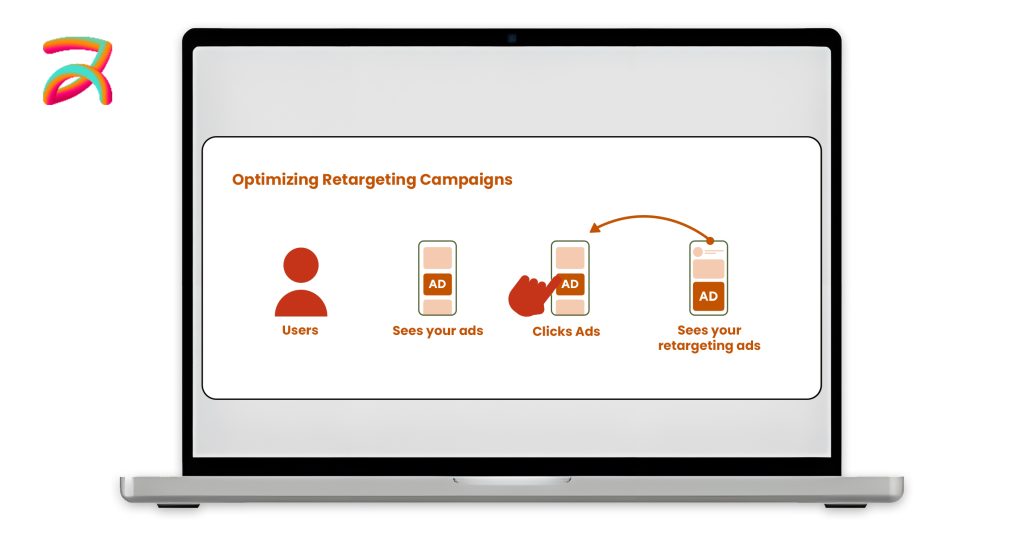
Once you have set up your Meta Ads retargeting campaigns, the next step is optimization. Even the best campaigns need fine-tuning to achieve the best results.
Creating strategic adjustments based on data and insights, you can boost conversions and ensure your budget is working effectively.
Here are some proven strategies to optimize your retargeting campaigns for the highest conversion potential.
Segmenting Your Audiences for Better Ad Relevance
Don’t show the same ad to everyone who visits your website. Split your visitors into specific groups based on what they did. People who looked at pricing pages need different messages than those who just read your blog.
Cart abandoners require special offers, while product viewers need more information about benefits. This targeted approach makes each ad feel relevant and personal.
Setting Frequency Caps to Avoid Ad Fatigue
Nobody likes seeing the same ad over and over again. Frequency caps limit how many times each person sees your retargeting ads per day or week.
Without these limits, people get annoyed and start ignoring your brand completely. Set caps at 2-3 times per day maximum. This keeps your ads fresh and prevents potential customers from developing negative feelings toward your business.
Analyzing and Testing Retargeting Ads for Better Results
Test different ad versions to see what works best for your audience. Try various headlines, images, and calls-to-action with small budget splits. Track which ads get more clicks and conversions, then put more money behind the winners.
Check your results weekly and pause underperforming ads. Regular testing and optimization can double or triple your retargeting campaign performance over time.
Real-World Case Studies of Successful Retargeting Campaigns
Understanding how successful brands use retargeting strategies can provide valuable insights and inspiration for your own Meta Ads campaigns.
Here are two case studies that highlight the effectiveness of dynamic retargeting and lookalike audiences in driving conversions and increasing ROI.
How a Retail Brand Used Dynamic Retargeting to Boost Sales
Case Study of Retail Brand Using Dynamic Retargeting
A retail brand specializing in fashion accessories implemented dynamic retargeting ads to recapture the attention of visitors who had abandoned their shopping carts.
Using dynamic product ads (DPAs), the brand was able to display personalized ads showcasing the exact products that users had previously viewed or added to their cart but did not purchase.
Meta Pixel tracked user behavior and connected the product feed, ensuring personalized ads displayed the right products at the right time.
Results Achieved
The results of this dynamic retargeting campaign were impressive:
- Sales Boost: The brand saw a 25% increase in sales within the first month of launching the campaign.
- Higher ROAS: The Return on Ad Spend (ROAS) was improved by 3x, with the brand seeing a substantial return on its ad spend thanks to more personalized ads.
- Reduced Cart Abandonment: The dynamic retargeting strategy led to a 40% reduction in cart abandonment, as users were reminded of their pending purchases through targeted ads.
This case highlights the power of dynamic retargeting Meta Ads in not only recovering lost sales but also improving customer engagement and increasing revenue.
How a SaaS Company Used Lookalike Audiences to Increase Conversions
Case Study of SaaS Brand Using Lookalike Audiences
A Software-as-a-Service (SaaS) company in the tech space aimed to grow its lead generation efforts by expanding its reach and attracting new users who were likely to convert.
They used lookalike audiences on Meta Ads to identify new prospects who shared similar behaviors, demographics, and interests with their best customers. The SaaS brand leveraged Meta Pixel to track user activity and used this data to create lookalike audiences based on the most engaged users.
Targeting people who resembled their existing high-value customers, the company was able to expand its reach and attract highly qualified leads.
Results Achieved
The results were outstanding:
- Lead Volume: The lookalike audience strategy increased their lead volume by 60% in just three months.
- Improved Conversions: The brand saw a 50% increase in conversions, as they were able to reach new potential customers who were more likely to engage with their SaaS offering.
- Cost Efficiency: By targeting a more refined audience, the SaaS company was able to reduce its cost-per-lead (CPL) by 35%, driving more efficient spend on their Meta Ads.
This case demonstrates how using lookalike audiences in Meta Ads can not only expand your reach but also improve your conversion rates by targeting users who are similar to your best existing customers.
Final Thoughts
Advanced Meta Ads retargeting strategies, like dynamic retargeting, custom audiences, and lookalike audiences, can significantly boost conversions by engaging users at different stages of their journey. Success comes from continuous testing and optimization, refining targeting, creatives, and strategy based on data.
So, keep experimenting and iterating because the more you refine your retargeting strategies, the better your results will become.
📞 Ready to Scale Your Meta Ads? Let Buzzz Lead the Way!
Want to boost your Meta Ads performance? Connect with Buzzz to get a customized strategy designed for maximum ROI. Let’s make your ads work smarter, not harder.
Get Started with Buzzz →Frequently Asked Questions
What is Meta Ads retargeting, and how does it work?
Meta Ads retargeting involves targeting users who have interacted with your brand but haven’t converted yet. By using tools like the Meta Pixel, you can track user actions and display tailored ads based on their previous behavior, such as abandoned carts or product views.
Why should I use retargeting for Facebook Ads?
Retargeting with Facebook Ads helps you reconnect with potential customers who’ve shown interest in your products or services. This method increases conversion chances and ROI by targeting warm leads and engaging them with personalized ads.
What are the benefits of dynamic retargeting for conversions?
Dynamic retargeting uses product feeds to display personalized ads based on user actions like abandoned carts or viewed products. It increases ad relevance, boosting the likelihood of converting visitors into paying customers.
How can I use custom audiences to improve my retargeting strategy?
Custom audiences allow you to create highly targeted groups based on specific actions on your website, such as page views or form submissions. This approach helps refine your ad targeting, ensuring your campaigns reach the most engaged users.
What is the role of lookalike audiences in retargeting campaigns?
Lookalike audiences expand your reach by targeting users who share similar behaviors and characteristics with your best customers. This helps you scale your campaigns and increase the chances of attracting high-quality leads that are more likely to convert.
What are the stages of a retargeting funnel?
A retargeting funnel targets users at different stages of the customer journey. From top-of-funnel (TOFU) awareness to bottom-of-funnel (BOFU) decision-making, each ad is designed to guide users closer to conversion by delivering tailored messaging for every stage.
How can I use video retargeting to increase engagement?
Video retargeting engages users who’ve interacted with video content. By showcasing customer testimonials, product demos, or behind-the-scenes content, video ads create emotional connections that drive higher engagement and conversions.
How do I implement time-based retargeting to create urgency?
Time-based retargeting uses limited-time offers, countdown timers, or discount codes to create a sense of urgency. This motivates users to take immediate action, increasing the likelihood of conversion within a specific time window.
What is the importance of audience segmentation in retargeting ads?
Audience segmentation allows you to target specific groups based on their actions, such as cart abandonment or previous purchases. Tailoring ads for each segment ensures higher relevance and better performance, leading to more conversions.
How do frequency caps help in optimizing retargeting campaigns?
Frequency caps limit the number of times users see the same ad, preventing ad fatigue and maintaining engagement. By ensuring users aren’t overwhelmed, frequency caps keep your ads fresh and effective, boosting overall campaign performance.
Can I use Meta Ads retargeting across multiple platforms?
Yes! Cross-platform retargeting expands your reach by displaying ads on Facebook, Instagram, Messenger, and the Audience Network. This broadens your visibility and increases touchpoints, leading to more opportunities for conversion.
How do I track and analyze the success of my Meta Ads retargeting campaigns?
You can track your Meta Ads retargeting performance through Meta Ads Manager. Key metrics like CPL (cost per lead), CTR (click-through rate), and ROAS (return on ad spend) will help you measure the effectiveness of your campaigns and make data-driven adjustments to improve results.


